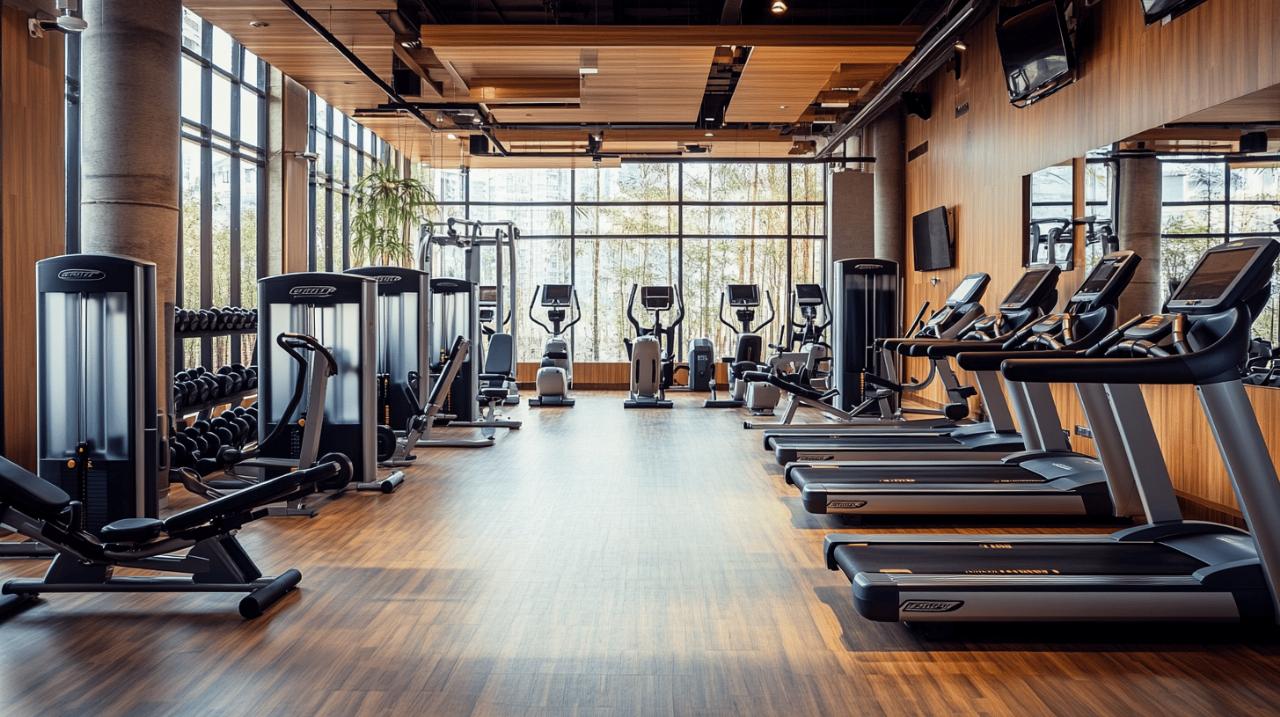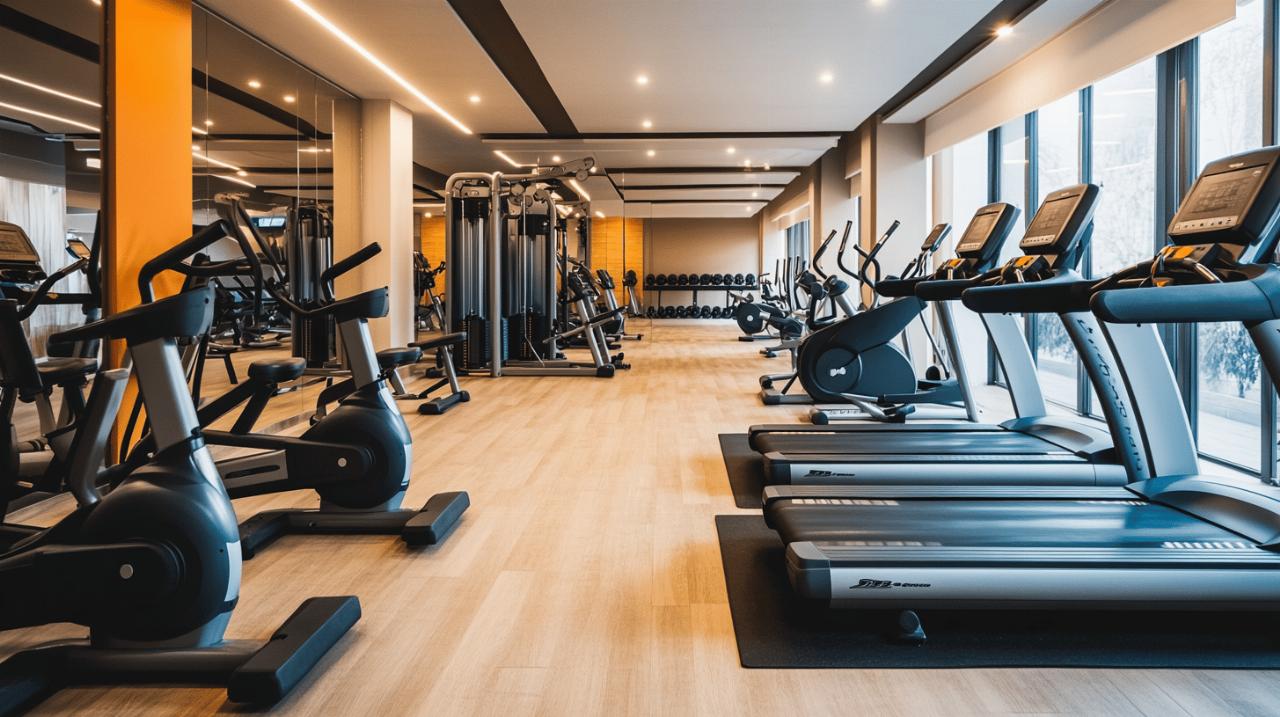Stepping into a modern gymnasium can feel rather like entering a laboratory of human performance, with rows of sophisticated equipment promising transformative results. For those committed to shedding excess weight, the challenge often lies not in motivation but in selecting the most effective tools from this impressive arsenal. Understanding which machines deliver genuine fat-burning results requires moving beyond marketing claims to examine the science of calorie expenditure, metabolic enhancement, and sustainable training practices.
Cardiovascular equipment for optimal calorie expenditure
Cardiovascular exercise forms the cornerstone of any serious weight loss programme, primarily because it elevates heart rate and creates the calorie deficit essential for fat reduction. The beauty of cardio machines lies in their ability to deliver consistent, measurable workouts whilst monitoring your progress through built-in tracking systems. When you engage in cardiovascular activity, your body demands increased energy, drawing upon stored fat reserves to fuel the effort. This process becomes particularly efficient when you maintain approximately seventy percent of your maximum heart rate, a zone where fat oxidation reaches optimal levels.
The elliptical trainer: low-impact, high-intensity fat burning
The elliptical trainer stands out as a remarkably versatile option for those seeking substantial calorie burn without subjecting their joints to excessive stress. This machine engages both upper and lower body simultaneously, creating a comprehensive workout that distributes effort across multiple muscle groups. Research indicates that a person weighing approximately eleven stone can burn around three hundred and twenty-four calories during a half-hour session on the cross trainer, making it one of the more efficient options available. The low-impact nature proves particularly valuable for individuals carrying extra weight or those with previous joint concerns, as the smooth gliding motion eliminates the jarring impact associated with running. What makes the elliptical especially effective is your ability to increase intensity progressively, ramping up resistance and speed as your fitness improves whilst maintaining that crucial joint-friendly movement pattern.
Indoor Cycling and Spin Classes: Maximising Heart Rate for Weight Loss
Stationary bikes and structured spin classes offer another excellent avenue for cardiovascular conditioning and weight reduction. A moderate cycling session can burn approximately two hundred and fifty-two calories in thirty minutes, though vigorous classes can substantially exceed this figure. The seated position makes cycling particularly accessible for beginners or those with balance concerns, whilst still delivering a powerful workout that elevates heart rate considerably. Spin classes, with their motivating atmosphere and structured intervals, push participants through varying intensities that challenge cardiovascular systems whilst building lower body strength. The beauty of indoor cycling lies in its scalability; you can adjust resistance to match your current fitness level whilst progressively increasing difficulty as you grow stronger. This equipment proves especially valuable for those seeking low-impact options that nonetheless deliver serious calorie-burning potential.
Resistance training machines: building lean muscle mass for enhanced metabolism
Whilst cardiovascular equipment captures immediate attention for its calorie-burning prowess, resistance training machines play an equally crucial role in sustainable weight loss. The immediate caloric expenditure during weightlifting might appear modest, with approximately one hundred and eight calories burned during a moderate thirty-minute session, yet this perspective misses the larger metabolic picture. Resistance training creates adaptations that extend far beyond the gymnasium floor, fundamentally altering your body composition and energy requirements.
Weight Machines and Free Weights: Creating a Calorie-Burning Foundation
Resistance machines offer structured, guided movements that help you target specific muscle groups whilst maintaining proper form, making them particularly valuable for those new to strength training. The cable machine stands as perhaps the most versatile option, allowing dozens of exercises with reduced injury risk compared to free weights. The Smith machine provides guided motion for compound movements like squats and bench presses, enabling you to handle heavier loads safely. For lower body development, the leg press machine delivers targeted work to major muscle groups without placing strain on your back, making it accessible even for those with mobility limitations. Meanwhile, the lat pulldown and chest press machines systematically develop upper body strength, engaging multiple muscle groups in controlled, effective movements. These machines incorporate safety features and guided paths that help you maintain correct exercise form, preventing the compensation patterns that often lead to injury.
The science behind muscle mass and resting metabolic rate
The true value of resistance training emerges when you understand metabolic adaptation. Muscle tissue remains metabolically active even at rest, burning significantly more calories than adipose tissue throughout the day. When you build lean muscle mass through consistent resistance training, you effectively increase your resting metabolic rate, meaning you burn more calories simply existing. This metabolic boost operates continuously, creating a compound effect that accelerates weight loss over time. Furthermore, resistance training prevents the muscle loss that commonly accompanies calorie restriction, ensuring that weight reduction comes predominantly from fat stores rather than valuable lean tissue. The strengthening of ligaments, tendons, and bones represents an additional benefit, creating a more resilient physical structure capable of handling increasingly challenging workouts. This combination of immediate calorie expenditure, metabolic enhancement, and structural strengthening makes resistance training indispensable for anyone serious about transforming their body composition.
Advanced training protocols for accelerated fat loss
 Understanding individual machines represents merely the foundation; truly effective weight loss programmes incorporate strategic training protocols that maximise caloric expenditure and metabolic adaptation. Simply performing steady-state exercise, whilst beneficial, leaves considerable potential unrealized. Advanced strategies manipulate intensity, duration, and exercise selection to create superior fat-burning environments.
Understanding individual machines represents merely the foundation; truly effective weight loss programmes incorporate strategic training protocols that maximise caloric expenditure and metabolic adaptation. Simply performing steady-state exercise, whilst beneficial, leaves considerable potential unrealized. Advanced strategies manipulate intensity, duration, and exercise selection to create superior fat-burning environments.
Interval training techniques on cardiovascular equipment
Interval training transforms cardiovascular equipment from simple calorie-burning tools into powerful metabolic enhancers. Rather than maintaining constant moderate intensity, interval protocols alternate between high-effort bursts and active recovery periods. On a treadmill, this might involve alternating between running at six miles per hour and walking at three miles per hour, or manipulating incline to create varying challenge levels. Walking on an incline between five and twelve percent can increase calorie burn by fifty-two to one hundred percent compared to flat walking, making gradient manipulation particularly effective. The popular twelve-three-thirty workout, involving a twelve percent incline at three miles per hour for thirty minutes, exemplifies this approach. Advanced treadmills like the NordicTrack X24 Incline Trainer offer up to forty percent incline, creating extraordinarily challenging conditions that engage glute, quad, and calf muscles intensely. On rowing machines or bikes, you can structure intervals by alternating between high resistance and lighter recovery periods, keeping your heart rate elevated whilst allowing sufficient recovery to maintain quality throughout the session. These varied intensities create metabolic disturbance that continues burning calories well after your workout concludes.
Circuit Training: Combining Cardio and Resistance for Maximum Results
Circuit training represents the pinnacle of efficient gymnasium programming, seamlessly blending cardiovascular and resistance elements into cohesive sessions that maximize calorie burn whilst building muscle. A properly structured circuit moves you rapidly between different stations, perhaps alternating between a rowing machine, leg press, stationary bike, cable machine exercises, and stair stepper segments. This approach keeps your heart rate elevated throughout the session, delivering cardiovascular benefits whilst the resistance components stimulate muscle growth. The minimal rest between stations creates metabolic demand that exceeds either cardio or resistance training performed independently. Additionally, circuit training addresses the practical reality that many people find extended cardio sessions rather tedious; the constant variation maintains engagement and makes sessions pass more quickly. You can design circuits that emphasize particular goals, perhaps focusing more heavily on lower body development or incorporating more cardiovascular segments depending on your specific needs and preferences. The versatility and efficiency of circuit training make it especially valuable for those with limited time who nonetheless seek comprehensive results.
Selecting the Right Equipment for Sustainable Weight Loss Success
Technical knowledge about calorie expenditure and metabolic processes matters considerably, yet sustainable weight loss ultimately depends on consistency over perfection. The most physiologically effective programme remains worthless if you cannot maintain adherence over weeks and months. This reality demands honest assessment of your preferences, limitations, and lifestyle constraints when selecting equipment and designing your training approach.
Matching Exercise Equipment to Your Fitness Level and Preferences
Individual circumstances vary dramatically, making universal prescriptions rather unhelpful. Someone carrying substantial excess weight might find the rowing machine uncomfortable initially, whilst the elliptical or stationary bike provides accessible entry points. Those with knee concerns might avoid the high-impact stair stepper in favor of swimming or cycling options. Previous athletic experience influences appropriate starting intensity; a former footballer might tolerate aggressive interval protocols that would overwhelm someone new to structured exercise. Honest assessment of your current fitness level prevents the common mistake of attempting programmes beyond your current capacity, which typically leads to either injury or burnout. Many effective programmes begin conservatively, perhaps starting with ten-minute sessions at moderate intensity before progressively extending duration and increasing challenge. The built-in tracking systems on modern gymnasium equipment help monitor this progression, providing concrete feedback that demonstrates improvement even before dramatic physical changes become apparent. Beginning with equipment that feels manageable and gradually expanding your capabilities creates sustainable momentum rather than unsustainable heroic efforts.
Creating a Balanced Programme: Consistency and Enjoyment as Key Factors
Perhaps the most crucial insight regarding equipment selection is that the best option remains the one you will actually use consistently. Theoretical superiority matters little if you dread your workouts and constantly find excuses to skip sessions. If you genuinely enjoy spin classes, that engagement will likely produce better long-term results than forcing yourself onto a theoretically superior machine you find tedious. A comprehensive programme incorporates both cardiovascular and resistance elements, ensuring you address immediate calorie burning whilst building the metabolic foundation for sustained weight management. Beginning each session with a proper warm-up, perhaps five to ten minutes of gentle activity that gradually elevates your heart rate, prepares your body for more demanding work. The main workout segment should challenge you at a sustainable intensity, ideally reaching that sixty to seventy percent maximum heart rate zone where fat burning optimizes. Concluding with a cool-down period and stretching helps your body recover and reduces injury risk. Remember that exercise represents merely one component of weight management; creating a calorie deficit requires attention to nutrition alongside your gymnasium efforts. Tracking your progress through the monitoring systems available on modern equipment provides motivation and helps identify when adjustments become necessary. Ultimately, sustainable weight loss emerges from consistent effort applied intelligently over time, making adherence and enjoyment paramount considerations when designing your programme.


